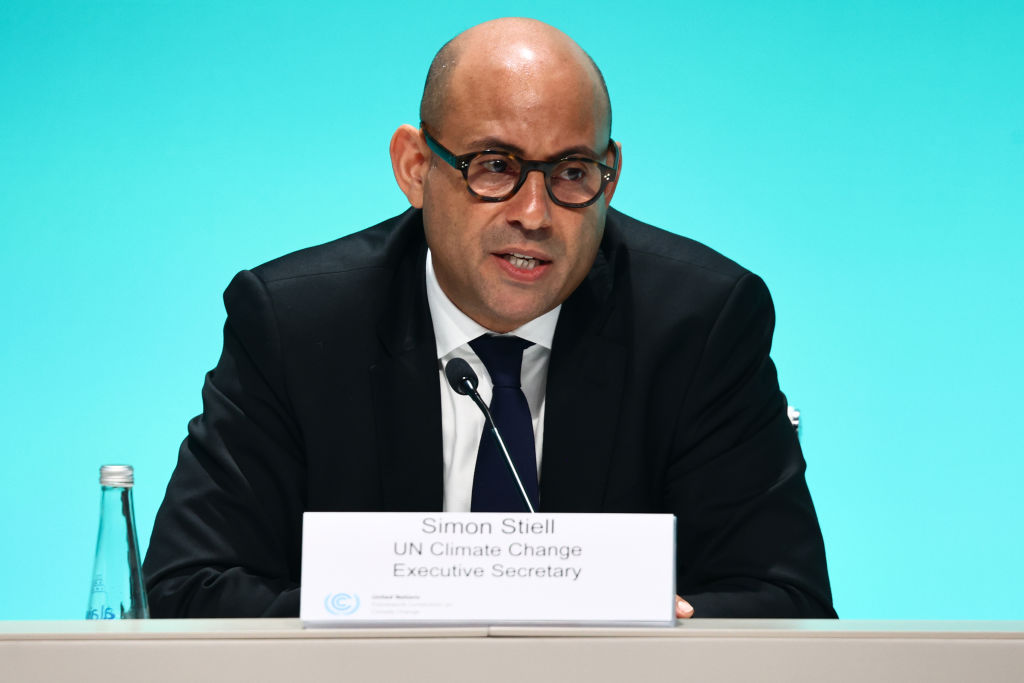UN: Global greenhouse gas emissions set to fall for the first time, but not quickly enough – Euractiv

Analysis of Global Climate Pledges and Alignment with Sustainable Development Goals
A recent assessment by the United Nations Framework Convention on Climate Change (UNFCCC) indicates that current climate pledges from world governments are projected to reduce global emissions for the first time. However, the report highlights a significant gap between these commitments and the targets required to achieve the Paris Agreement, a cornerstone of Sustainable Development Goal 13 (SDG 13: Climate Action).
Projected Emissions Trajectory vs. SDG 13 Targets
The analysis projects a 10% decrease in global emissions by 2035 compared to 2019 levels. While this represents progress, it falls critically short of the reductions necessary to meet the climate objectives outlined within SDG 13.
- Projected Reduction: 10% by 2035.
- Required for 1.5°C Target (SDG 13): A 60% reduction in emissions by 2035.
- Required for 2°C Target (SDG 13): A 35% reduction in emissions by 2035.
This disparity underscores the insufficient pace of current global efforts to mitigate the most severe impacts of climate change.
Challenges to Global Climate Commitments (SDG 17)
The report’s findings are based on limited data, revealing challenges in global cooperation and partnership, which are central to Sustainable Development Goal 17 (SDG 17: Partnerships for the Goals).
- Incomplete Submissions: Only approximately one-third of the nearly 200 signatories to the Paris Agreement submitted their formal climate pledges, known as Nationally Determined Contributions (NDCs), by the deadline.
- Major Emitters Lagging: Key nations, including major emitters such as China and India, as well as the European Union, have yet to submit their formal NDCs. The UN’s forecast incorporates informal declarations from these entities.
- Political Uncertainty: The commitment of the United States, a significant contributor to global emissions, remains uncertain due to administrative changes, posing a risk to the collective effort.
Economic Opportunities and Future Outlook
The UNFCCC emphasizes that accelerated climate action offers significant benefits, aligning with multiple Sustainable Development Goals, particularly SDG 8 (Decent Work and Economic Growth). The upcoming COP30 climate summit is identified as a critical opportunity to strengthen global resolve.
- Economic Engine (SDG 8): Climate action is framed as a “monumental” opportunity and a primary engine for economic growth and job creation in the 21st century.
- Strengthening Partnerships (SDG 17): The COP30 summit in Belém, Brazil, is positioned as a key moment for governments to enhance cooperation and accelerate the reduction of greenhouse gas emissions.
- Urgent Acceleration (SDG 13): There is an urgent call to increase the pace of climate action at COP30 and beyond to ensure a sustainable and liveable planet for the global population, in line with the overarching goals of the 2030 Agenda for Sustainable Development.
Analysis of Sustainable Development Goals in the Article
1. Which SDGs are addressed or connected to the issues highlighted in the article?
-
SDG 13: Climate Action
The entire article is centered on climate change, discussing global emissions reduction pledges, the goals of the Paris Agreement (limiting global warming to 1.5°C or 2°C), and the role of the UN Framework Convention on Climate Change (UNFCCC). It directly addresses the urgent need for action to combat climate change and its impacts.
-
SDG 17: Partnerships for the Goals
The article highlights the importance of global cooperation to achieve climate goals. It discusses the Paris Agreement as a global pact, mentions the number of signatories who have submitted their climate pledges (‘nationally determined contributions’ or NDCs), and points out that major emitters like China, India, and the EU have yet to formally submit theirs. This underscores the theme of international partnership and collective responsibility.
-
SDG 8: Decent Work and Economic Growth
The article connects climate action to economic opportunities. UN climate policy chief Simon Stiell is quoted stating that climate action “emerges as the economic growth and jobs engine of the 21st century.” This links the transition to a green economy with the goals of promoting sustained, inclusive, and sustainable economic growth and creating jobs.
2. What specific targets under those SDGs can be identified based on the article’s content?
-
Under SDG 13 (Climate Action):
- Target 13.2: Integrate climate change measures into national policies, strategies and planning. The article’s focus on countries presenting their formal climate pledges, known as ‘nationally determined contributions’ (NDCs), is a direct implementation of this target. It discusses the pledges made by the US and the expected submissions from the EU, China, and India.
- Target 13.a: Implement the commitment undertaken by developed-country parties to the United Nations Framework Convention on Climate Change. The article is framed around the UNFCCC’s analysis of climate pledges and the upcoming COP30 summit, which are central to the implementation of this commitment.
-
Under SDG 17 (Partnerships for the Goals):
- Target 17.14: Enhance policy coherence for sustainable development. The article discusses the need for nearly 200 signatories of the Paris Agreement to align their national policies with the global climate effort by submitting their NDCs. The lack of submission from major emitters is presented as a challenge to this coherence.
- Target 17.16: Enhance the Global Partnership for Sustainable Development. The Paris Agreement itself is a prime example of this global partnership. The article’s discussion of the collective effort (or lack thereof) among nations like the US, China, India, and the EU to meet shared climate goals directly relates to the functioning and effectiveness of this partnership.
-
Under SDG 8 (Decent Work and Economic Growth):
- Target 8.1: Sustain per capita economic growth in accordance with national circumstances. The statement that climate action is an “economic growth… engine of the 21st century” implies that green policies can and should be used to achieve this target.
3. Are there any indicators mentioned or implied in the article that can be used to measure progress towards the identified targets?
-
For SDG 13 (Climate Action):
- Greenhouse Gas Emissions Reduction Percentage: The article provides several specific quantitative indicators to measure progress. These include the forecast that “Global emissions in 2035 should fall 10% compared to 2019,” the required cuts of “60% by 2035” to meet the 1.5°C goal, and the US pledge to “cut emissions by at least 61% by 2035.” These percentages are direct measures of climate action.
- Global Temperature Increase Limit: The article explicitly mentions the aspirational target to limit global warming to “not more than 1.5 degrees Celsius” and the upper limit of “2°C” from the Paris Agreement. These temperature thresholds are key indicators of success or failure in combating climate change.
- Indicator 13.2.1 (Number of countries with nationally determined contributions): The article implies this indicator by stating, “Only about one-third of nearly 200 signatories of the Paris Agreement presented their formal climate pledges.” This provides a clear metric for tracking the integration of climate policies at the national level.
-
For SDG 17 (Partnerships for the Goals):
- Number of Countries Submitting Pledges: The progress of the global partnership is measured by the number of countries participating actively. The article uses the figure “one-third of nearly 200 signatories” as an indicator of the current level of commitment and policy coherence within the Paris Agreement framework.
-
For SDG 8 (Decent Work and Economic Growth):
- Job Creation and Economic Growth from Climate Action: While no specific numbers are provided, the article implies that progress can be measured by tracking economic growth and job creation resulting from green initiatives. The quote describing climate action as an “economic growth and jobs engine” suggests these are key performance indicators for the success of the green transition.
4. Summary Table of SDGs, Targets, and Indicators
| SDGs | Targets | Indicators |
|---|---|---|
| SDG 13: Climate Action |
13.2: Integrate climate change measures into national policies, strategies and planning.
13.a: Implement the commitment to the UNFCCC. |
– Percentage reduction in global emissions (e.g., “fall 10% compared to 2019,” “cut by 60% by 2035”). – Global temperature increase limit (e.g., “1.5 degrees Celsius,” “2°C”). – Number of countries submitting Nationally Determined Contributions (NDCs) (e.g., “one-third of nearly 200 signatories”). |
| SDG 17: Partnerships for the Goals |
17.14: Enhance policy coherence for sustainable development.
17.16: Enhance the Global Partnership for Sustainable Development. |
– Number and proportion of countries submitting formal climate pledges under the Paris Agreement. |
| SDG 8: Decent Work and Economic Growth | 8.1: Sustain per capita economic growth. | – Implied indicator: Economic growth and number of jobs created as a result of climate action (“economic growth and jobs engine”). |
Source: euractiv.com
What is Your Reaction?
 Like
0
Like
0
 Dislike
0
Dislike
0
 Love
0
Love
0
 Funny
0
Funny
0
 Angry
0
Angry
0
 Sad
0
Sad
0
 Wow
0
Wow
0
















































:focal(1500,1000)/https://media.globalcitizen.org/a6/9a/a69a4720-d8a1-4715-b596-18738d03c05c/rotary_polio_hero_image.jpg?#)







/countries/sri-lanka/photo-credit---dmc-sri-lanka.tmb-1200v.jpg?sfvrsn=dc298bcc_1#)

















